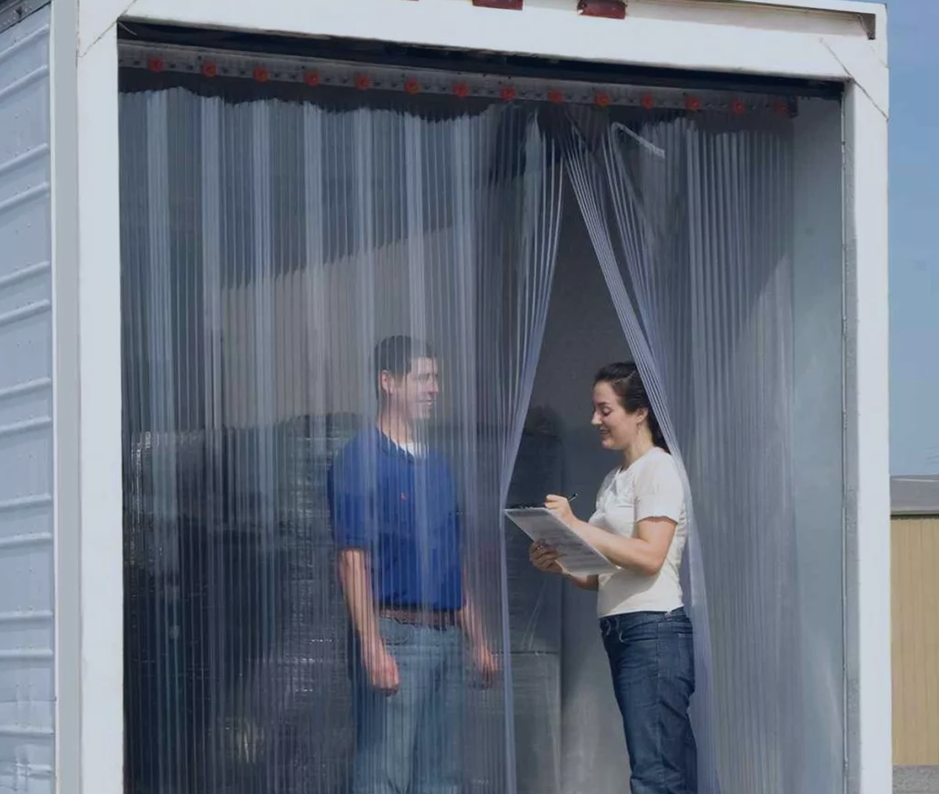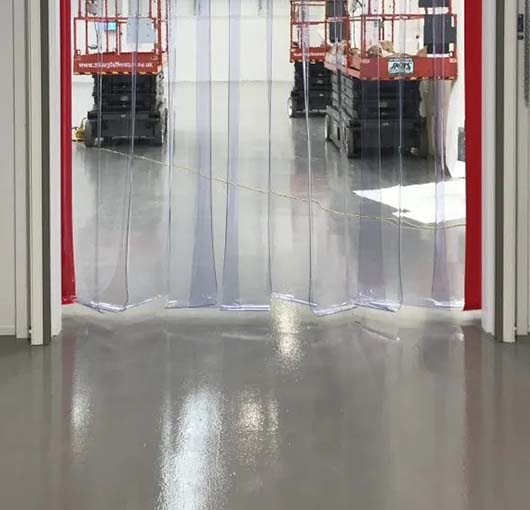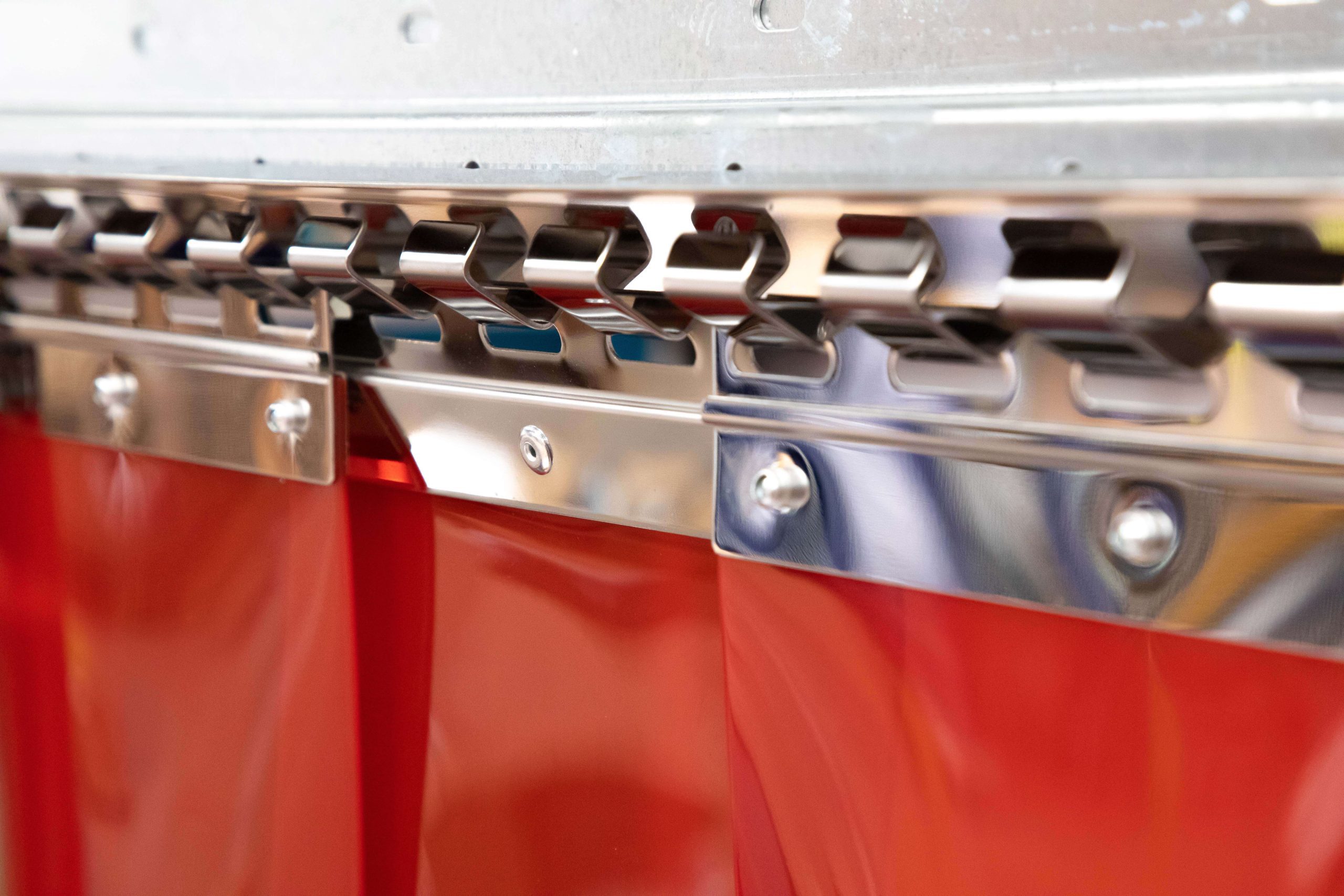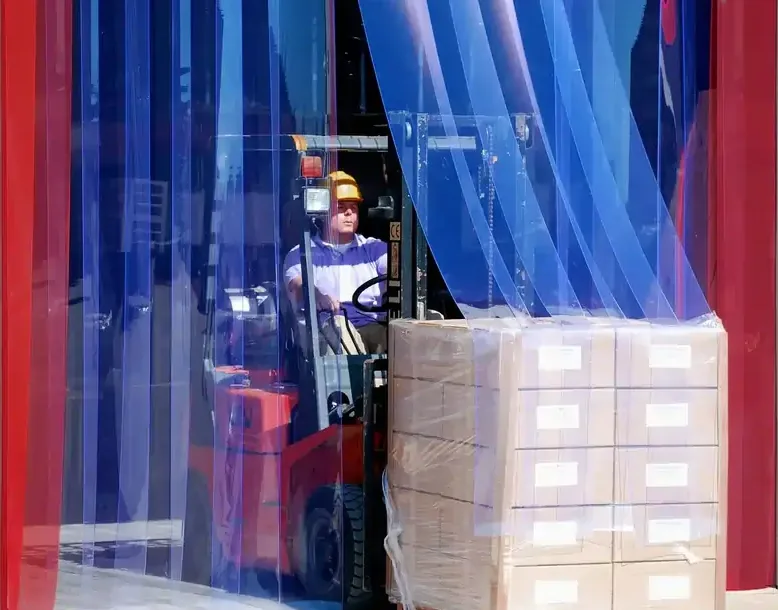Home >How to Prevent PVC Strip Curtains from Curling >How to Prevent PVC Strip Curtains from Curling
How to Prevent PVC Strip Curtains from Curling

What are strip curtains and what are they used for?
Before we can prevent PVC strip curtains from curling, let’s first have a basic understanding of what PVC strip curtains are and what they are used for.
PVC strip curtains are flexible, transparent strips made from flexible polyvinyl chloride (PVC) material. They are typically hung in overlapping rows to form a barrier that is easy to walk or drive through.
PVC strip curtains play a crucial role in maintaining temperature control by minimizing the escape of cold air and preventing warm air from entering, especially in refrigeration and freezer environments. This helps in creating distinct temperature zones that are essential for preserving the quality and safety of stored goods. Additionally, these curtains enhance energy efficiency by reducing the loss of conditioned air, leading to significant energy savings in heating and cooling systems.
Beyond temperature regulation, PVC strip curtains serve as effective barriers against dust, dirt, and insects, thus maintaining the cleanliness and integrity of sensitive areas. They also contribute to noise reduction by dampening sound transmission between different areas, which is particularly beneficial in creating quieter work environments. The transparency of the strips enhances safety and visibility, reducing the likelihood of collisions in busy spaces like warehouses and factories by allowing clear sightlines between separated zones. Furthermore, PVC strip curtains offer ease of access for both personnel and equipment, as they can be easily pushed aside and will automatically return to their original position, ensuring continuous and convenient entry and exit.
PVC strip curtains are commonly used in warehouses, factories, cold storage rooms, loading docks, and food processing facilities.

Why Do PVC Strip Curtains Curl at the bottom?
PVC strip curtains curl due to several factors:
- Temperature Variations: Extreme temperatures, whether hot or cold, can cause the PVC material to expand and contract, leading to curling. This is why curling often occurs in refrigerators.
- Improper Storage and Handling: When not stored correctly, PVC strips can develop bends and curls. Unrolling them incorrectly can also cause them to retain a curled shape. Try to ensure that you do not roll up the strips too tightly when storing or handling.
- Wear and Tear: Over time, heavy usage and exposure to harsh environments can cause the material to degrade and curl. This is usually the case with low-quality PVC.
- Low-Quality Material: Inferior quality PVC is more prone to curling and other forms of deformation. We recommend using high quality PVC to prevent curling and to ensure a long-life span. Here’s our blog explaining the importance of choosing high-quality PVC.
- Incorrect Strip Sizes: If the PVC strips do not fit the size of the doorway they can touch the ground and curl. This is easily fixed by trimming the bottom of the PVC strips to the correct size.
How to Prevent PVC Strip Curtains from Curling
Preventing PVC strip curtains from curling involves proper installation, maintenance, and handling practices. Here are some tips to help you keep your curtains straight and functional:
- Let them hang for a few hours: PVC strip curtains often just need a few hours to hang so that they can straighten out again. The weight of the strip curtains usually is enough to get the curtains into their correct position again once installed.
- Proper Installation: Ensure that the strips are installed correctly. We recommend that you alternate the strips when placing them on the rail. This ensures that the bottoms of the PVC strips curl towards each other. They then push against each other and cancel out the curl. The PVC strips should also hang straight without any twists or bends. Also ensure that the mounting hardware was installed correctly and is level with the floor. Using the right mounting hardware and ensuring that it is level, while also ensuring that the strips are cut to the correct length are crucial steps in preventing curling.
- Choose High-Quality PVC: Invest in high-quality PVC strips from reputable suppliers. High-grade PVC is designed to prevent curling and to last longer. High-grade PVC is less likely to curl and will last you years, providing better value for money.
- Temperature Control: Try to maintain a stable temperature in the area where the PVC curtains are used. Sudden temperature changes can cause the material to warp and curl. If the curtains are used in an environment with extreme temperatures, consider using specialized PVC that is designed to withstand such conditions. We recommend Low Temperature PVC to prevent curling in cold conditions.
- Correct Storage: When not in use, store the PVC strips flat or in a loosely rolled position to prevent them from developing a permanent curl. Avoid stacking heavy objects on top of the strips as this can cause them to bend.
- Regular Maintenance: Inspect the PVC strips regularly for signs of wear and tear. Clean them periodically to remove dirt and debris, which can contribute to material degradation. If you notice any curling, address it immediately before it becomes severe.
- Heat Treatment: If the strips start to curl, you can use heat treatment to straighten them. Gently heating the PVC with a heat gun or warm water can make it more pliable, allowing you to reshape it. Be careful not to overheat the material, as this can cause damage.

How to Fix Existing Curling
If your PVC strip curtains are already curling, there are several methods you can use to straighten them:
- Alternating Strip Direction: We suggest alternating the strips when placing them on the rail. This ensures the bottoms of the PVC strips curl towards each other, pushing against one another and neutralizing the curl.
- Weighted Bars: In serious cases, we recommend attaching weighted bars or strips to the bottom of the PVC strips. The added weight can help pull the material down and reduce curling.
- Reverse Rolling: Take the strips off the hanging system and roll the strips in the opposite direction of the curl and secure them in place for a few hours. This can help counteract the curling effect.
- Heat Treatment: As mentioned earlier, gently heating the curled areas can make them more pliable. Straighten the strips while they are warm and hold them in place until they cool down.


Clearway quality prevents curling
Clearway is well-known for making and selling high-quality PVC products. We use advanced methods and strict quality checks to make sure that our PVC is very strong and lasts longer than our competitors. One important quality of Clearway PVC is that it stays flat and doesn’t curl when installed. This reliability makes Clearway’s PVC a great choice for uses that need consistent performance and durability. We only ensure the best quality PVC at a reasonable price. We also ensure to make our PVC 100% recyclable, Phthalate Free and environmentally friendly. Interested in purchasing some PVC strip curtains? Feel free to contact us today!
Build your own PVC Strip Curtain and recieve an instant quote!
Save yourself time and create your own bespoke curtain from our strip curtain calculator. This will give you the opportunity to create a complete custom curtain which will be made to your measurements and shipped to you within a few days.
